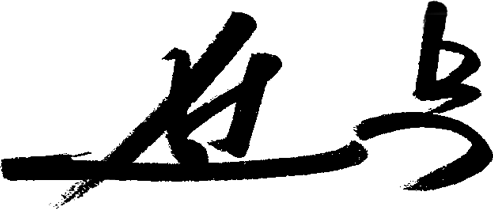As the Winter Olympic Games take place in South Korea, FRANCE 24 talks to a North Korea-born artist about his satirical work.
The opening ceremony at this month’s Winter Olympics Games was a dazzling spectacle. But what stole the show was the image of athletes from North and South Korea walking side-by-side behind a unified flag – embodying the hopes of a peninsula divided by ideology and mistrust.
The apparent detente caught the world by surprise. In 2017 the threat of nuclear missile attack by Pyongyang reached an all-time high.
South Korea’s President Moon Jae-in was later invited to the country’s neighbouring North – sparking optimism that a rapprochement could avert a possible devastating conflict.
But this is a trip that Sun Mu – a pseudonym that translates into “No Boundaries” – is not likely to take any time soon. The North Korea-born artist is among those who have made their way to safety in the South. According to one NGO, an estimated 300,000 North Koreans have defected since the end of the Korean War in 1953.
Sun Mu tells FRANCE 24 nothing has changed since his escape in 1999: “If the situation had improved, North Korea would have opened up. And people like me would be able to go back and forth.”
A perilous journey
Growing up under the iron fist of Kim Il-Sung, the founder of North Korea, defecting was not Sun Mu’s original plan.
“I thought North Korea was a good country. I was one of those who were willing to die for their leader. But in the end, when you’re hungry… you need to eat.”
In the late 90s, during a mass famine that by some estimates killed three million people, Sun Mu made his escape by crossing the Tumen river into China, before heading south.
“When I arrived in China, I realised how difficult life was going to be without a legal identity. I said to myself, the south is my land too. I’d also heard that people like me were automatically granted citizenship. So I bought a map, and ended up taking a bus to Laos, before traveling to Thailand. From there, I took a flight to South Korea. That was in 2002. I didn’t have a real plan, but I thought to myself, I’d rather die trying than live without an identity.”
Politics on a canvas
Trained as a propaganda artist in his native North, Sun Mu felt that there was little else he wanted to do. Free from the constraints of the dictatorship, he started painting again, and eventually discovered his own style. He began producing satirical works: blending images of North Korean communism with pop art, sometimes even drawing inspiration from the colourful world of Disney.
“My work, what I call ‘my propaganda’, does contain criticism of the regime. But it also contains a lot of my thoughts, my hopes for the future in images.”
Over the years, Sun Mu – now in his mid 40s – has been taking his art across the globe, from South Korea to China to the United States and Germany. But his satire is largely misunderstood in cities like Seoul, where painting pictures of the ruling dynasty is considered a crime under national security laws.
Upside-down propaganda
In Sun Mu’s “Some Take Medicine”, a rosy-cheeked young girl offers a Coca-Cola, a symbol of capitalist America, to the sickly former leader of the North, Kim Jong Il – who died in 2011. For the artist, the message of this piece is that the isolated country needs “to open its doors before it can begin to live”.

Perhaps one of Sun Mu’s most recognised paintings is a close-up of Kim Jong Il wearing his trademark Ray Ban sunglasses. He calls it “Control”. At first glance, this could be any other portrait of the country’s leader that adorns thousands of walls in the North – in homes, in offices, at schools. But on closer inspection, the image reflected in his sunglasses carries Sun Mu’s own message, an expression of fear: hungry workers in the field fleeing, as a soldier points his gun at them. This – whilst men and women from various religious faiths stand by and watch.

In another piece, entitled ‘A Song of Joy’, a young uniformed schoolgirl at the centre of the canvas is smiling widely, unaware that those outside are living different lives… that “they are experiencing another kind of happiness,” Sun Mu explains.

Obstacles
During his first show in the southern capital, the police turned up to investigate.
“South Koreans are skeptical of my work. Many of them still have Cold War mentalities,” says Sun Mu.
Worse yet, in Beijing his display was shut down and some 70 paintings were seized. Even 800 kilometres away from the watchful eye of the North, Sun Mu’s art was being silenced. Until that point, no North Korean had held a solo exhibition in China without supervision from Pyongyang.
While Sun Mu was preparing to uncover this show in 2014, the process was documented by filmmaker Adam Sjoberg, who had previously worked on conflict zones and natural disasters.
I Am Sun Mu was released in 2015.
“I wanted to understand North Korea beyond the headlines,” Sjoberg tells FRANCE 24.
“That’s why I love people like Sun Mu, who don’t paint in black and white, either figuratively or literally, but rather communicate the complexities of the North while imbuing something dark with a sense of hope and even humour,” he adds.
But even in what was supposed to be a quasi tell-all, the artist “couldn’t reveal everything”.
“If I gave away too much information, people in the North could get hurt… I actually had to ask the director to take several scenes out,” explains Sun Mu.
Despite becoming a public figure, Sun Mu’s true identity remains a mystery. He never shows his face to the camera, often appearing in silhouette or from the back.
“I’ve always been cautious because the danger is very real. I’m living here with my new family but I do have to think of my parents and siblings in the North. I can’t be completely sure of my own safety here. I am however, definitely better off in South Korea than I would be in China.”
Hopes for the future
But Sun Mu still clings to hope, especially at a time when many observers are cynical about a North-South detente: “If both sides have the will, there will be a way.”
But he is critical of excessive foreign interference.
“It’s a pity that several heads of state are using this reunion for their own political gains, to please their electorates… I’m just sick and tired of the US, Russia, China and Japan… In fact in one of my artworks I’ve thrown specks of red paint all over them.”

The red paint represents the blood that these “leaders” — also the name of the painting — have on their hands.
Sun Mu ends the conversation by comparing his own country’s leadership to that of the US.
“Donald Trump and Kim Jung Un are not so different. I think if they came face to face, they would actually get along. The big question is, will there ever be an opportunity for the two of them to meet?”
via france24

